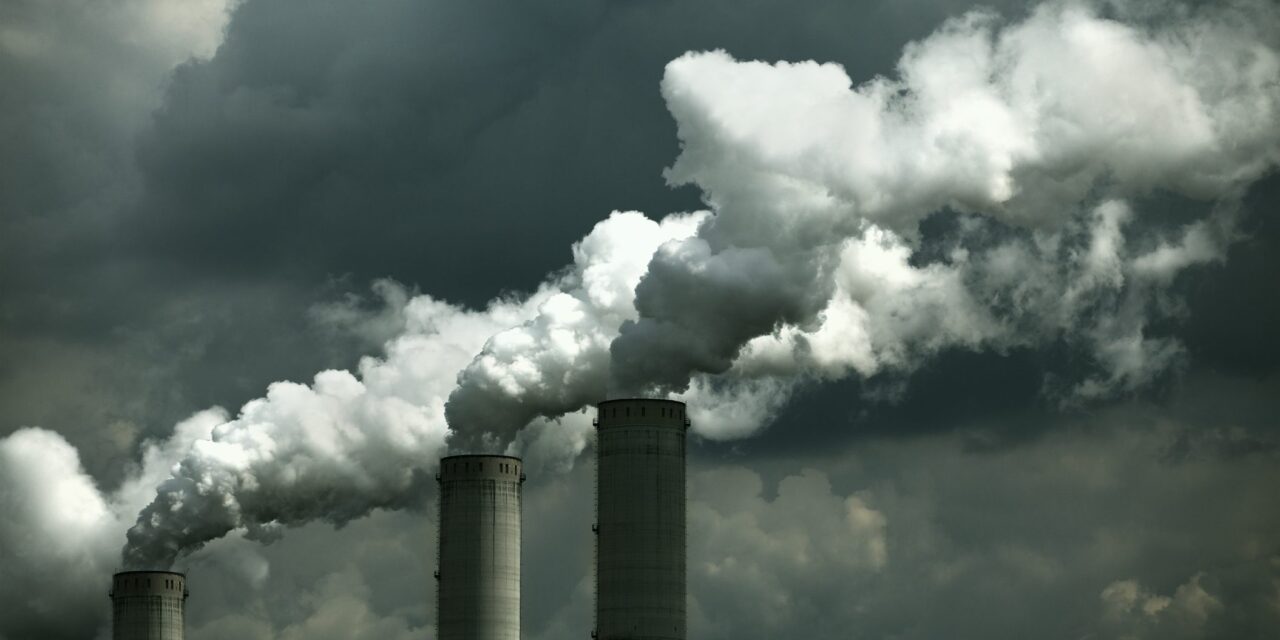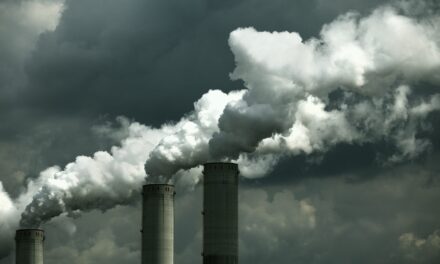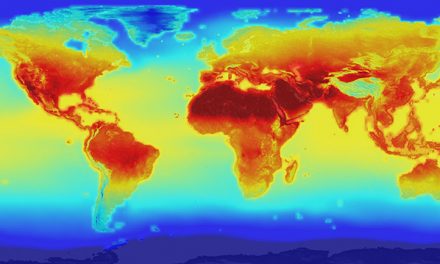When we tend to think of “global warming” or climate” change that is being driven by carbon dioxide emissions, it’s easy for us to look at only the temperature data, particularly the temperature data regarding warming of the atmosphere.
The Big Blue Sky is the arena where most of the professional climate “skeptics” have reared their ugly heads to throw lies and disingenuous half truths around claiming that the well documented warming trend due to increases in CO2 are unrelated or over-hyped malarkey by environmentalist alarmists. Skeptics have claimed everything from the sun to gamma rays to an alleged “cooling trend” to hide the ball and raise suspicion in the minds of the public that it i human activity (specifically the burning of fossil fuels) which is having a major impact on our climate.
One area everyone in the PR battle over the effect CO2 emissions has ignore for some reason (not the scientists mind you, but the news media’s reporting ion this issue) is perhaps the single largest place where man made carbon emissions is having a significant effect on not just climate but on life as we know it: The Oceans.
Specifically the rapid rate of ocean acidification because the world’s oceans suck up all those carbon emissions like the world’s largest vacuum cleaner:
WASHINGTON — With the oceans absorbing more than 1 million tons of carbon dioxide an hour, a National Research Council study released Thursday found that the level of acid in the oceans is increasing at an unprecedented rate and threatening to change marine ecosystems. […]
Unless emissions are reined in, ocean acidity could increase by 200 percent by the end of the century and even more in the next century, said James Barry, a senior scientist at the Monterey Bay Aquarium Research Institute in California and one of the study’s authors.
“Acidification is changing the chemistry of the oceans at a scale and magnitude greater than thought to occur on Earth for many millions of years and is expected to cause changes in the growth and survival of a wide variety of marine organisms, potentially leading to massive shifts in ocean ecosystems,” Barry told the Senate Commerce Committee’s Oceans, Atmosphere, Fisheries and Coast Guard Subcommittee on Thursday.
What sort of effects are we talking about? The destruction of shell fish on which many of our coastal communities rely to employ people and provide a valuable source of protein for both humans and other ocean creatures because their shells will literally dissolve. Many fishermen are extremely concerned about this risk:
Erling Skaar, a Bering Sea Crab fisherman from Alaska said: ‘We could be facing a question of having resources or having no resources in a very few years if they keep dumping more carbon in the oceans.’
‘We don’t know the time line, but we don’t want to find out that it’s too late,’ he said.
Perhaps most significant is the threat to the underlying basis for the the a large part of the foundation for the oceans’ food chain: phytoplankton:
Some of the most abundant lifeforms that could be affected by ocean acidification are a type of phytoplankton called coccolithophorids, which are covered with small plates of calcium carbonate and are commonly found floating near the surface of the ocean (where they use the abundant sunlight for photosynthesis). Other important examples are planktonic organisms called foraminifera (which are related to amoeba) and pteropods (small marine snails).
Experiments carried out at sea have shown that the shells of live pteropods dissolve when seawater reaches corrosive levels. Ocean acidification is detrimental to high-latitude ecosystems and highly acidic conditions could develop within decades, not centuries as suggested previously.
A fall in the numbers of pteropods could cause a chain reaction since they make up the basic food for organisms from zooplankton to whales, as well as for species that are important commercially, such as North Pacific salmon. For example, the plankton on which cod larvae feed would disappear, and the cod would then go too, and something else not linked heavily to the food chain – like jellyfish – will move into their niche in the ecosystem.
We could, in just a few decades be inundated with jellyfish as the predominant ocean species. They are already pressuring cod stocks. in the Baltic Sea. Jellyfish have also invaded the warmer eaters of the Caribbean Sea and Gulf of Mexico. Something tells me they won;t be what’s for dinner on the tables of your children and grand children in the future. But they may be all we have left. That and algae which eats plastic.
And let us not ignore the threat that warmer, more acidic oceans pose to human health.
For residents of marine and freshwater coastal regions, perhaps one of the most visible manifestations of the interdependence of human and ocean health are the episodic harmful algal blooms (HABs) that affect almost every part of the U.S. coastline. HABs are natural phenomena caused by the proliferation of algae, resulting in damage to the environment and/or risk to the health of humans and aquatic life. Many HAB species produce toxins that are accumulated and passed up the food chain, causing illness or death in humans and other organisms that consume them. Nontoxic organisms can also cause blooms. These so-called “noxious” or “nuisance” bloom species grow to high biomass and cause oxygen depletion, reduction in biodiversity, physical damage, and shading of the benthos. The frequency and severity of HAB events appears to be increasing globally …
HABs are a key focal area of the national research initiatives on Oceans and Human Health (OHH) at NSF/NIEHS and NOAA. All of the OHH Centers, spread from the east coast to Hawaii, include one or more research projects devoted to understanding HAB problems. Collectively, the Centers are engaged in intense study of a variety of major recurrent toxic HAB species in the U.S.: Alexandrium tamarense, Gambierdiscus spp., Karenia brevis, Microcystis spp., and Pseudo-nitzschia spp. (Figure 1). Emerging HAB problems, such as the cyanobacteria responsible for β-N-methylamino-L-alanine poisoning, are also under investigation.
Many scientists believe that these direct threats to human health may very well be accelerated by ocean acidification along with increased pollution:
The greatest problems for human society will be caused by being unprepared for significant range expansions or the increase of algal biotoxin problems in currently poorly monitored areas, thus calling for increased vigilance in seafood-biotoxin and HAB monitoring programs.
Climate change isn’t just severe winter weather where and when it’s not expected or a Spring that arrives too hot and to early at higher latitudes or Summers that break record temperatures and fuel wild fires across the globe. Climate change also involves that vast 70% of the earth’s surface we call the oceans. We ignore the changes occurring there at our peril.





